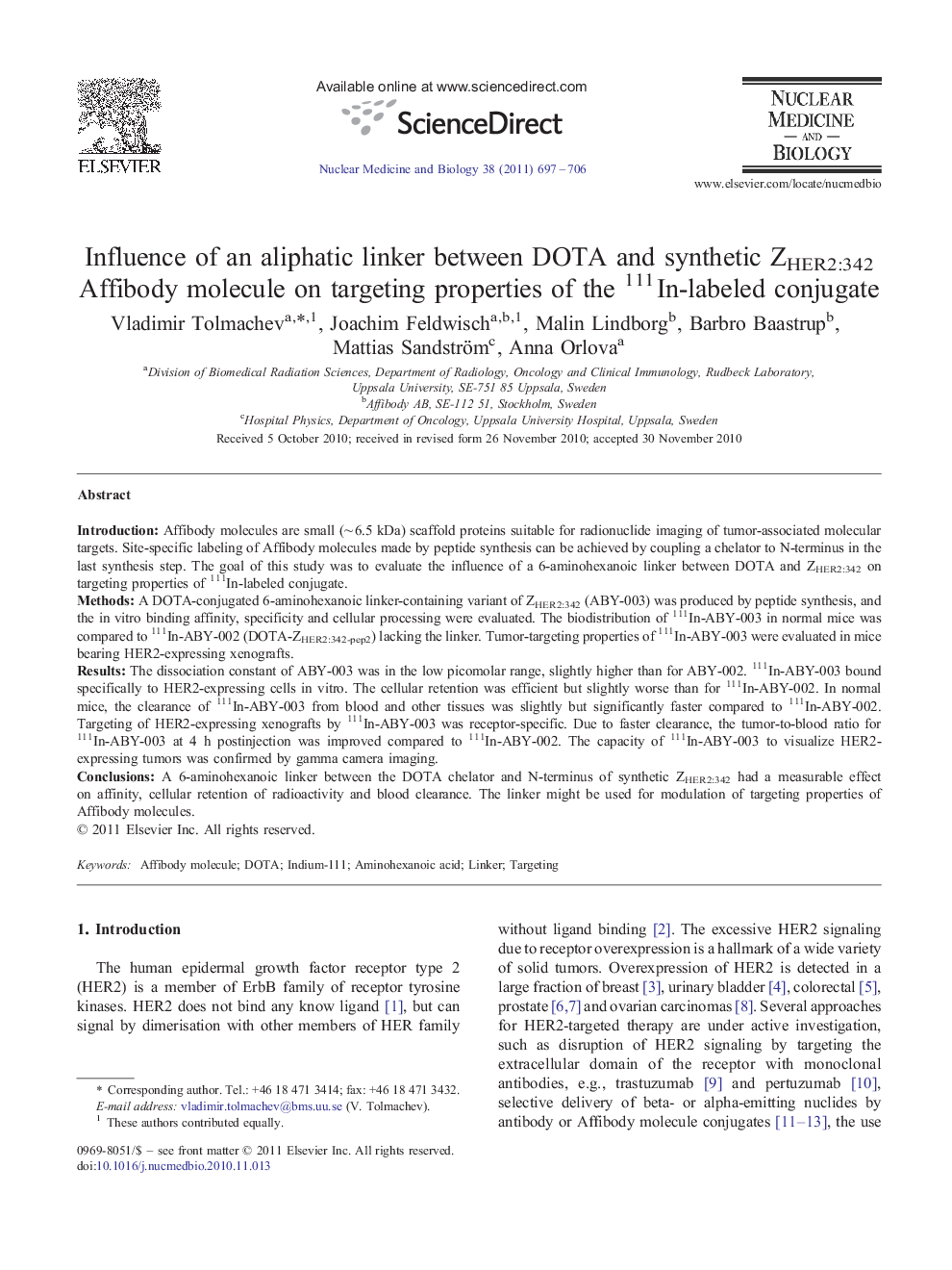| Article ID | Journal | Published Year | Pages | File Type |
|---|---|---|---|---|
| 2154273 | Nuclear Medicine and Biology | 2011 | 10 Pages |
IntroductionAffibody molecules are small (∼6.5 kDa) scaffold proteins suitable for radionuclide imaging of tumor-associated molecular targets. Site-specific labeling of Affibody molecules made by peptide synthesis can be achieved by coupling a chelator to N-terminus in the last synthesis step. The goal of this study was to evaluate the influence of a 6-aminohexanoic linker between DOTA and ZHER2:342 on targeting properties of 111In-labeled conjugate.MethodsA DOTA-conjugated 6-aminohexanoic linker-containing variant of ZHER2:342 (ABY-003) was produced by peptide synthesis, and the in vitro binding affinity, specificity and cellular processing were evaluated. The biodistribution of 111In-ABY-003 in normal mice was compared to 111In-ABY-002 (DOTA-ZHER2:342-pep2) lacking the linker. Tumor-targeting properties of 111In-ABY-003 were evaluated in mice bearing HER2-expressing xenografts.ResultsThe dissociation constant of ABY-003 was in the low picomolar range, slightly higher than for ABY-002. 111In-ABY-003 bound specifically to HER2-expressing cells in vitro. The cellular retention was efficient but slightly worse than for 111In-ABY-002. In normal mice, the clearance of 111In-ABY-003 from blood and other tissues was slightly but significantly faster compared to 111In-ABY-002. Targeting of HER2-expressing xenografts by 111In-ABY-003 was receptor-specific. Due to faster clearance, the tumor-to-blood ratio for 111In-ABY-003 at 4 h postinjection was improved compared to 111In-ABY-002. The capacity of 111In-ABY-003 to visualize HER2-expressing tumors was confirmed by gamma camera imaging.ConclusionsA 6-aminohexanoic linker between the DOTA chelator and N-terminus of synthetic ZHER2:342 had a measurable effect on affinity, cellular retention of radioactivity and blood clearance. The linker might be used for modulation of targeting properties of Affibody molecules.
